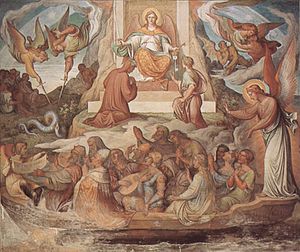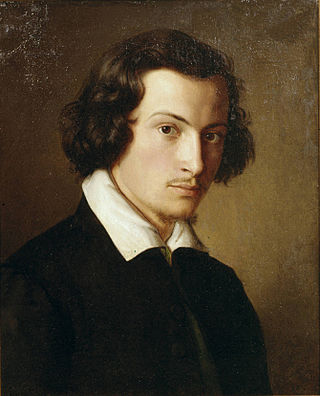
Philipp Veit was a German Romantic painter and one of the main exponents of the Nazarene movement. It is to Veit that the credit of having been the first to revive the nearly forgotten technique of fresco painting is due.

German Romanticism was the dominant intellectual movement of German-speaking countries in the late 18th and early 19th centuries, influencing philosophy, aesthetics, literature, and criticism. Compared to English Romanticism, the German variety developed relatively early, and, in the opening years, coincided with Weimar Classicism (1772–1805).

Julius Schnorr von Carolsfeld was a German painter, chiefly of Biblical subjects. As a young man he associated with the painters of the Nazarene movement who revived the florid Renaissance style in religious art. He is remembered for his extensive Picture Bible, and his designs for stained glass windows in cathedrals.

Peter von Cornelius was a German painter; one of the main representatives of the Nazarene movement. He was the uncle of the composer Peter Cornelius (1824–1874).
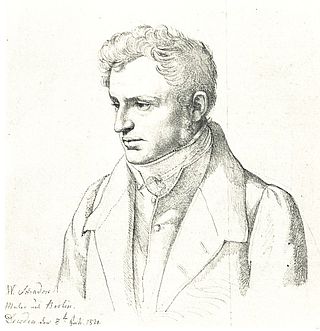
Friedrich Wilhelm von Schadow was a German Romantic painter.

Johann Friedrich Overbeck was a German painter and a founder of the Nazarene art movement.

Joseph von Führich was an Austrian painter, one of the Nazarenes. He painted religious pictures almost exclusively. Führich acquired his greatest fame as a draughtsman.
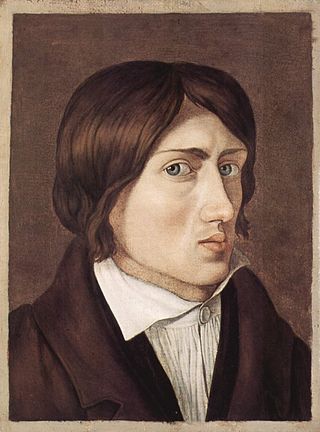
Franz Pforr was a painter of the German Nazarene movement.

The Neue Pinakothek is an art museum in Munich, Germany. Its focus is European Art of the 18th and 19th centuries, and it is one of the most important museums of art of the nineteenth century in the world.
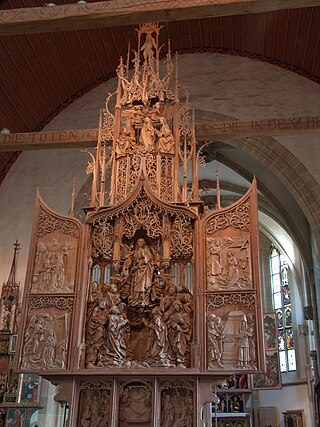
German art has a long and distinguished tradition in the visual arts, from the earliest known work of figurative art to its current output of contemporary art.
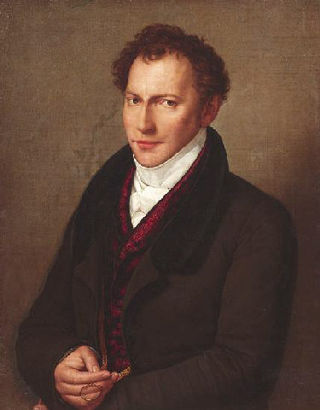
Jakob Ludwig Salomon Bartholdy was a Prussian diplomat and art patron.
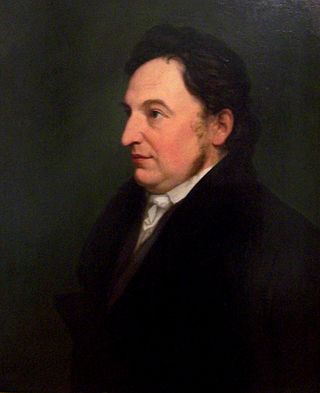
Johann Gottlob von Quandt was a German artist, art scholar, and collector.
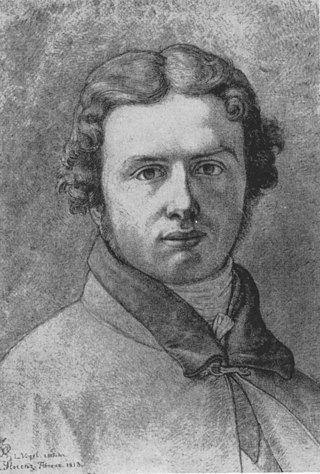
Georg Ludwig Vogel was a Swiss history painter, associated with the Nazarene movement.

Veit Hanns Friedrich Schnorr von Carolsfeld was a German portraitist.

Ludwig Ferdinand Schnorr von Carolsfeld was a German Romantic painter, engraver and lithographer.

Franz Johann Heinrich Nadorp, was a German painter who primarily worked and lived in Rome.
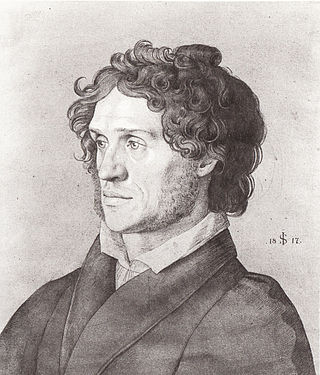
Johann Heinrich Ferdinand Olivier (1785–1841) was a German painter associated with the Nazarene movement.

Woldemar Friedrich von Olivier was a German history painter in the Romantic style, often associated with the Nazarene movement.

Vittoria Candida Rosa Caldoni was an Italian artists' model. She was the most popular model among the German artists residing in Rome in the early nineteenth-century; especially those associated with the Nazarene movement. Over 100 paintings with her image have survived.

Immanuel Christian Leberecht von Ampach was a German collegiate church councillor, canon in Naumburg, and Dean of the collegiate chapter in Wurzen. He is best remembered as a coin collector and patron of the arts.

